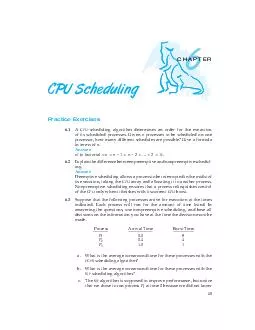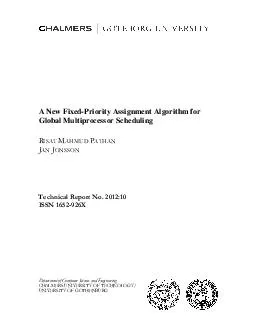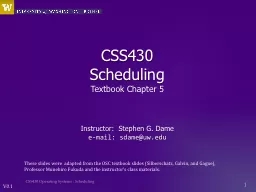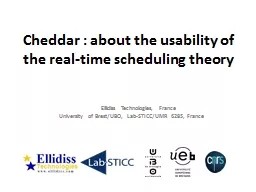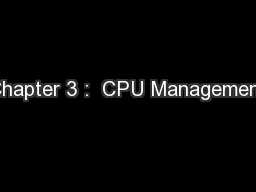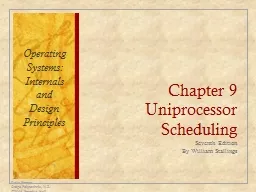PDF-CHAPTER CPU Scheduling Practice Exercises
Author : danika-pritchard | Published Date : 2015-01-17
1 CPU scheduling algorithm determines an order for the execution of its scheduled processes Given processes to be scheduled on one processor how many different schedules
Presentation Embed Code
Download Presentation
Download Presentation The PPT/PDF document "CHAPTER CPU Scheduling Practice Exercise..." is the property of its rightful owner. Permission is granted to download and print the materials on this website for personal, non-commercial use only, and to display it on your personal computer provided you do not modify the materials and that you retain all copyright notices contained in the materials. By downloading content from our website, you accept the terms of this agreement.
CHAPTER CPU Scheduling Practice Exercises: Transcript
Download Rules Of Document
"CHAPTER CPU Scheduling Practice Exercises"The content belongs to its owner. You may download and print it for personal use, without modification, and keep all copyright notices. By downloading, you agree to these terms.
Related Documents

